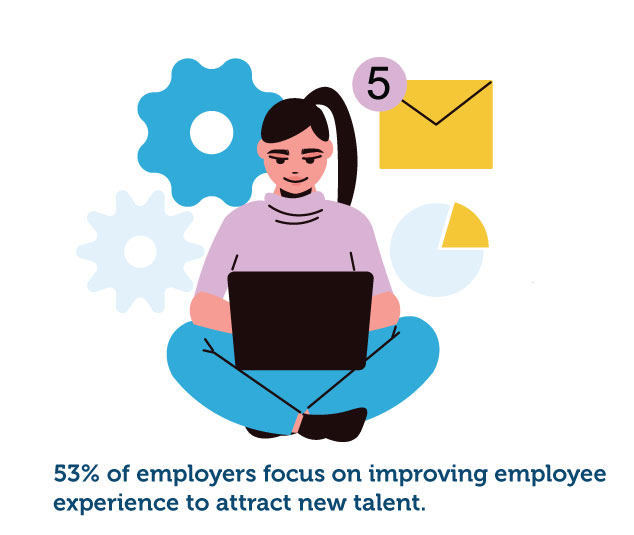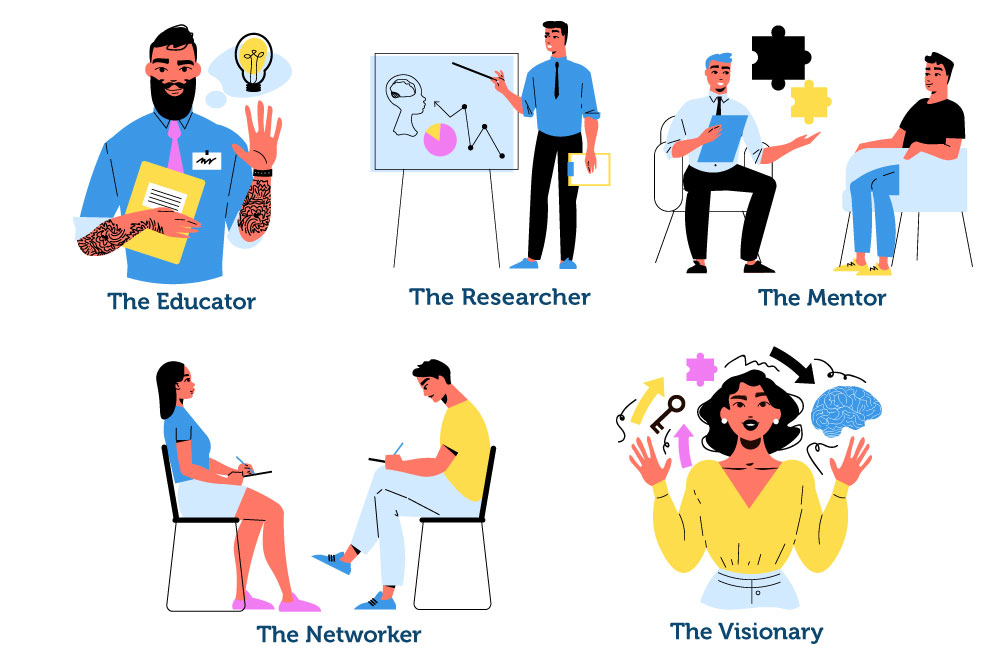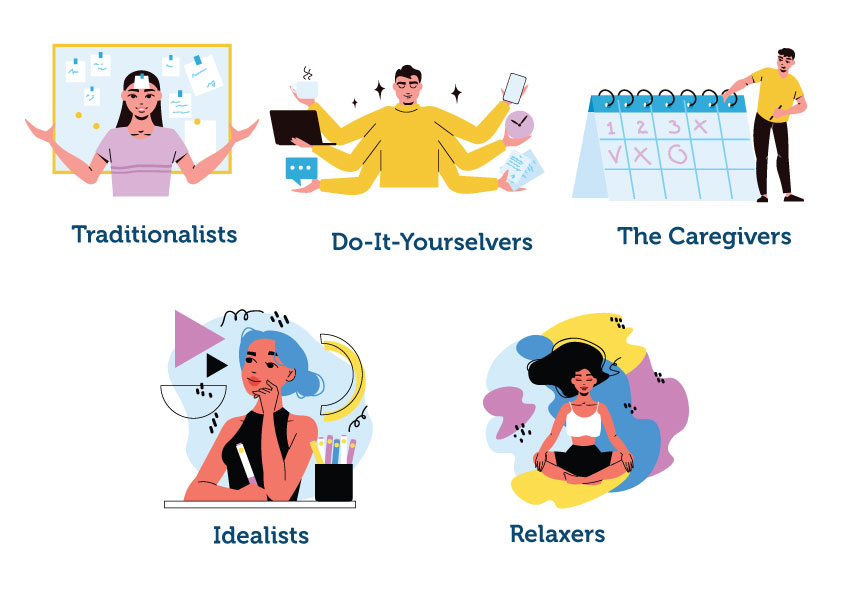
What is Voluntary Time Off (VTO)?
Discover how, if done correctly, voluntary time off can allow employees to find the perfect work-life balance while lowering company costs.

In today’s competitive job market, finding top talent is challenging.
Even though BLS reports six million unemployed Americans, according to Statista, the number of open positions exceeds ten million.
So, why is there such a large gap between available job posts and unemployed people?
According to PwC, the main reason is that people’s job priorities have shifted.
Namely, 37% are looking for positions with opportunities to learn new skills, 51% are interested in flexible arrangements, and 62% seek diverse and inclusive companies.
Businesses are matching these demands: 93% provide room for upskilling, reskilling, or both, 80% offer flexible working arrangements, and 35% of leaders prioritize diversity, equity, and inclusion.
But yet, according to a Glassdoor survey, 76% of hiring managers say their number one challenge is attracting quality candidates.
So, how can HR and recruiting teams find and attract the best-fitting candidates?
To successfully navigate the current job market, hiring managers should consider what job seekers most value or dislike about a job. However, to keep them on, their requirements must be compatible with the demands of the job position and the company’s culture.
This is where employee personas can come in handy.
This article explores the employee persona and its benefits with insightful experts’ perspectives on utilizing it as a recruitment strategy.
Personas are a tool that marketing teams have been using for a while to customize the experience for buyers. Nowadays, they are becoming more common in HR as employees desire a more personalized workplace experience.
The “employee persona” concept groups employees with similar characteristics, needs, wants, and behaviors. Thus, creating personas gives the HR teams a unique perspective, enabling them to tailor people-centric employee experiences to boost attraction and retention.
In fact, WTW’s Talent Attraction and Retention Survey show that 53% of employers focus on improving employee experience to attract new talent.

There are many employee personas examples, but the following are some of the most common in the workplace.
Educators value being up-to-date with the latest happenings and thus become familiar with many subject matters. They enjoy collaborating with their co-workers, sharing their vast knowledge, and offering support in their areas of expertise.
These employees thrive in environments that promote learning and development opportunities. They thoroughly enjoy developing specialist skills and are motivated to extend their knowledge to move up the career ladder.
Mentors have a fondness for empowering others and watching them succeed. They derive satisfaction in being role models and brand advocates for their companies. They are always willing to share knowledge, provide guidance and feedback, and help employees settle into their roles.
As the name suggests, these employees love networking and connecting with others. They are always willing to go to events to have an opportunity to build professional relationships. They have excellent knowledge of communities, which can help companies improve their brand awareness.
Probably one of the most essential employee personas, visionaries can be crucial to a business’s success. They find motivation in developing goals for the future and can tell what changes an organization needs to make to achieve its desired outcomes.

Everything they see, do, learn, and feel, from when employees onboard a company to when they leave, becomes part of their company journey.
All of the failures and achievements shape their employee experience – and every organization must strive to facilitate a positive one.
According to a McKinsey survey, employees with positive experiences are 16 times more likely to be engaged and eight times more loyal to their companies.
In addition, Salesforce and Talenteck’s research paper shows a correlation between positive employee experience and a company’s financial growth.
Furthermore, a research study by Jacob Morgan found that organizations that invest in employee experience see four times greater profits.
All of this goes to show that it is vital for companies to map their employees’ journeys. Through journey maps, employers can track workers’ key stages and experiences and identify the strengths and weaknesses of each.
So, how can companies approach employee experience journey mapping?
Every move and change a company makes has to be backed by data. Therefore, it is clear that the first step towards journey maps is to gather information. Whether through interviews, surveys, or discussions, anything employees and leadership share add significant insight into the employee experience.
After the research is concluded, the next phase is developing employee personas. Employee personas and journey mapping are closely related since workers with similar needs, goals, frustrations, and expectations often share resembling experiences.
Additionally, detailed research can help identify important stages or moments for each persona. Whether a company looks at its hiring and onboarding processes or the learning and development opportunities, it is essential to outline desired outcomes and potential difficulties that personas face during each stage.
The final stage is creating employee maps and taking action.
The visual output of an employee’s journey provides a clear overview of problem areas, enabling employers to smooth out the bumps in the road of an employee’s journey.
Creating an employee persona can have many benefits for companies. However, organizations should follow specific steps to ensure they are adequately developed.
As the Digital Marketing Manager of Explainerd, Natasha Rei, states, “The persona should be based on real data, such as surveys of current employees or interviews with top performers.”
Therefore, the first step towards building employee personas is conducting research. Personas are not going to be effective if they are created from assumptions.
Conducting surveys, gathering employee feedback, and creating focus groups are all effective ways to understand employees’ unique characteristics, needs, wants, and frustrations.
Besides identifying workers’ desires and troubles, collecting statistics on diversity, demographics, absence, attendance, and retention rates are also prudent.
Companies with an implemented HRIS system can use its data to add additional information to employee profiles to help divide them into groups.
After gathering all the necessary information, the next step is to identify all similarities and distinguish the criteria for dividing them into clusters.
What foundations a company decides to use for the different personas depends on the type of business and its organizational leadership.
However, it is critical to remember that there is such a thing as too many personas. It is recommended to limit the number to around three to five profiles.
Once it’s decided upon the types of personas, it is time to publish them and make them available to everyone in the company.
Organizations can put whatever they like into the publications, but typically most businesses choose to include the following:
Creating employee personas is not a one-time thing. Organizational and socio-economic changes can have an impact on them and demand changes.
Thus, after building and publishing the personas, companies should regularly check in with employees and gather feedback to ensure they bring value to the organization.

From fostering better employee experience to boosting motivation and engagement, employee personas can be beneficial for organizations.
The Active Job Seeker Dilemma study found that 83% of leaders believe employee experience is crucial for success.
However, personalizing experience for every individual employee is nearly impossible, but building employee personas makes it easier to pinpoint the significant issues for each group, thus making it simpler to make changes and improve their experience.
A report from Leadership IQ shows that only 26% of employees are motivated yet unhappy. Indeed, every person has different driving forces, and accommodating all is beyond the bounds of possibility.
However, people with similar traits also often share related incentives, and offering at least the most pertinent ones can make employees more satisfied with their work.
According to Gallup’s research, engaged employees increase a company’s profitability by 23%. Yet, only 21% of employees worldwide are engaged at work. However, according to a study by Elissa Tucker, employee experience can drive employee engagement, which can be boosted by utilizing personas.
United Minds’ study, The Contribution Effect, found that positive employee experience is the key to retention. Employee personas allow managers to stay on top of what employees need to elevate their experience, ergo, building their loyalty to the company. Rei agrees by stating that “using employee persona can help improve retention rates by ensuring that new hires are a good fit for the company long-term.”
Author, motivational speaker, and business consultant, Marcus Buckingham wrote for HBR, “Great leaders tap into the needs and fears we all share. Great managers, by contrast, perform their magic by discovering, developing, and celebrating what’s different about each person who works for them.”
In fact, Gallup found that 70% of the variance in employee engagement rates across companies is due to managers.
Hence, since managers are responsible for ensuring their team is motivated and satisfied with their work, they are the ones who can best determine what their teams seek from their jobs.
Furthermore, good leaders who invest time into finding out what their employees desire and frustrate them can play a great role and provide significant insight for designing employee personas.

Finding the perfect candidate for an open job position is never easy.
In fact, a CareerBuilder survey found that nearly three in four hiring managers hired the wrong person for the job – costing the company an average of $15,000 for each hire.
Therefore, companies must implement different strategies to find a candidate that works best for that job opening, and using employee personas to attract top talent is a prominent approach.
Rei condones this sentiment, stating, “Employee persona is a recruitment strategy that helps businesses attract the right candidates by targeting specific personality types that fit well with the company culture and values.
By understanding which traits are most important for success in a particular role, businesses can more effectively identify and hire top talent.”
How can employee personas help companies in the hiring process?
Natasha Rei believes that “one of the most effective approaches is to create a fictional character that represents the ideal candidate for a given position.”
Hence, using an employee persona to determine the preferred candidate can give the hiring manager prior knowledge and understanding of what that candidate might be looking for in a company.
In that way, they will be able to find the best fit and know what to offer them to persuade them to join the organization.
Recent McKinsey research discovered that, besides grouping employees into personas depending on their role in the workplace, job seekers could also be separated into personas depending on what to look for in a job.
Hence, according to the research, hiring managers can use the following five personas as a recruitment strategy.
These people are focused on their careers and are willing to fully immerse themselves in their work for competitive salaries, benefits, career advancement, and job titles.
The problem with traditionalists is that they can often be persuaded to return if offered better traditional values, such as higher compensation. Hence, companies find themselves fighting their competitors to retain traditionalist employees.
This group of individuals would accept almost anything for the autonomy to decide their working hours and the type of work they would do. What they value most in a job position is flexibility.
To attract these workers, companies must show they embrace flexibility from the very beginning, even during the interviewing and hiring processes.
This profile of job seekers is constantly growing due to the pandemic since many parents and caregivers had to stay home during that time.
However, many are willing to give themselves entirely to a company if it offers specific values, such as flexible working arrangements, four-day workweeks, and flexible benefits.
The members of this group tend to be younger, typically around 18 to 24 years old, and most are students or part-time workers.
They appreciate most flexibility, development opportunities, and a sense of belonging. They value diversity and inclusiveness more than the other groups.
The cohort mainly consists of retirees or those not actively looking for work. There has been a surge of retirees during the early months of the pandemic, so it includes many early retirees.
However, due to inflation, one in five are looking for work and can be enticed by higher wages and meaningful work.

Accenture’s The Future of Work report states that 83% of employees see hybrid work as the best approach for the future.
In addition, McKinsey’s survey found that nine out of ten leaders plan to adopt a hybrid model, with 32% already having an established implementation plan.
However, although most workers wish to work from home at least partially during the week, not all employees are the same. So, there are still some who feel more comfortable staying in the office.
This is where employee personas can be valuable. Taking a persona-based approach, companies can determine how their workforce should be distributed.
If companies fully adopt the hybrid working model, it is still vital to understand every employee’s experience working under such conditions
Separating the workforce into employee persona groups contributes to personalization and adds greater value to employees’ experiences, especially if combined with employee journey mapping.
It’s an innovative approach to improving different aspects of a business by creating a people-centric company culture and a positive working environment.
Browse our curated list of vendors to find the best solution for your needs.
Subscribe to our newsletter for the latest trends, expert tips, and workplace insights!

Discover how, if done correctly, voluntary time off can allow employees to find the perfect work-life balance while lowering company costs.

What happens when one recruiter owns the entire hiring journey? Full-cycle recruiting transforms the fragmented steps, from preparation to onboarding, into a connected journey that builds trust and results.

Uncover the key elements of the recruitment process and transform it into a streamlined journey toward finding the right talent for your organization.

Uncover the true potential of ATS and CMS in revolutionizing your recruitment efforts.
Used by most of the top employee benefits consultants in the US, Shortlister is where you can find, research and select HR and benefits vendors for your clients.
Shortlister helps you reach your ideal prospects. Claim your free account to control your message and receive employer, consultant and health plan leads.